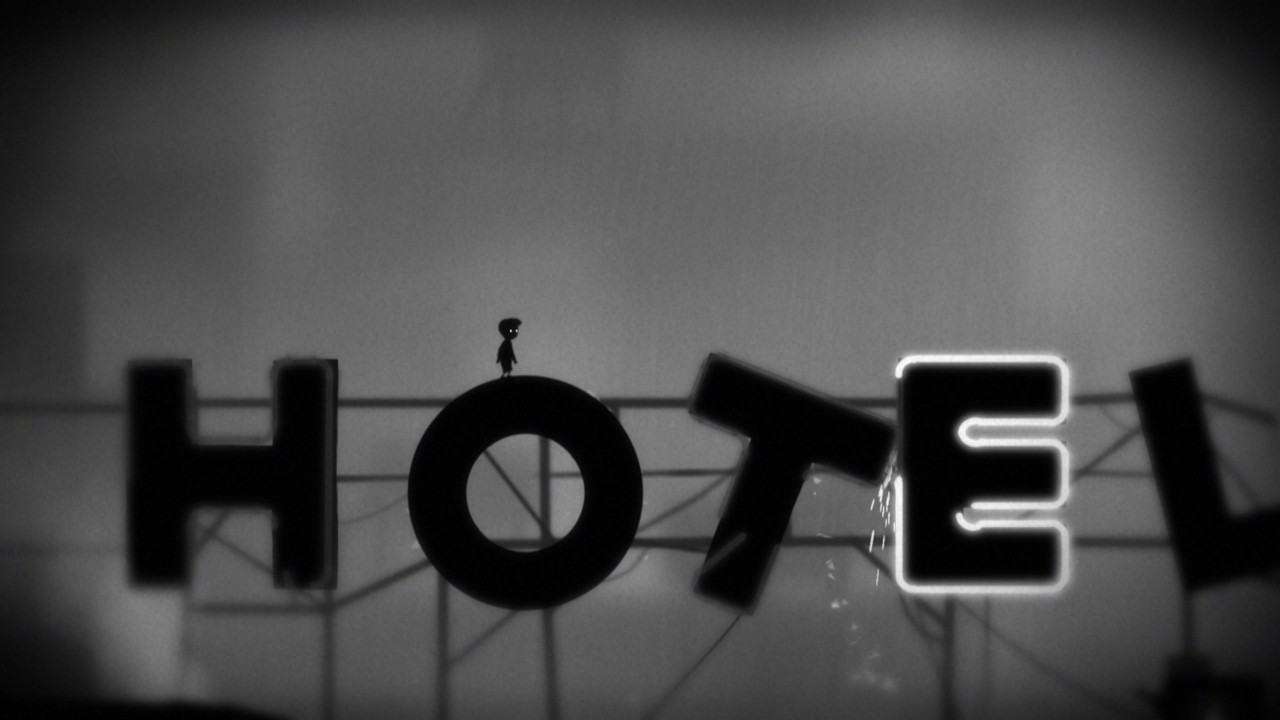"Nana, do little boys and girls go to heaven when they die?"
"No, honey. They go to limbo."
This conversation with my grandmother introduced me to the idea of an otherworldly realm in which I pictured children wandering aimlessly through darkness and mist, denied the pleasure of communing with God. I imagined that to be in Limbo was to feel perpetually lost and unable to find the way, or to even know what your destination might be.
Limbo, the game, is special in that while it does not wholly depict that mysterious dimension as my mind did, it captures its essence. You are a boy who wakes up in a lonely world made up only of black, white, and shades of gray. Video game logic demands you walk from left to right, jumping over obstacles as they appear, a simple task that needs little attention in the initial moments. This is your chance to absorb your surroundings. The background provides an illusion of depth, but its branches and bridges are out of focus, as if you are dreaming them into existence. The pint-sized hero, his bright blinking eyes shining from his blackened silhouette, trots ahead with the charming gangliness of a six-year-old.

Then comes death. Limbo is a hostile place, home to giant spiders that would feast upon you, and traps apparently scattered by the world's other denizens. You step onto a claw trap, and it closes on your neck. Your head falls to the ground and wobbles just for a moment before lying still. No tears are shed, no music plays--the game provides no grand gesture to honor your demise. It simply happens, and you revive at the most recent checkpoint to try the puzzle again. Some of these deaths aren't outright fair; stepping on a pressure plate could mean certain death, but so could jumping over it. Such inconsistencies aren't common, but your first time in Limbo requires some trial-and-error experimentation. Loading times are short, and checkpoints are frequent, however, so death is rarely a frustration, though often a horror.
What does it all mean? People pondered that question when Limbo was first released on the Xbox 360 in 2010, and the Xbox One version adds nothing new that would illuminate the mystery of this world, so there's little reason to splurge on another version if you've already played. Nevertheless, the ending offers important clues to the greater plot, if not to the details of the game's events and objects--the imposing neon hotel sign that you must cross, for instance, or the murderous children, seemingly escaped from Lord of the Flies, that aim their blowguns at you. Limbo means for its atmosphere to consume you in the moment, and in that sense, it succeeds. You drag a dead child's corpse to solve a puzzle, and perhaps wonder if anyone grieves this lost soul given the apathy of the realm. You glimpse a figure and regard her with tenderness, but the brief glimmer of hope is snuffed out in an instant.


It isn't until the final third of its two- to three-hour runtime that Limbo's puzzles become challenging. The first half of the game is more concerned with building dread and ambiguity. Even after being vanquished, a colossal spider's remaining leg thrusts at you from its thorax, one final act of defiance that could leave two corpses for the crows to pick. When you pull the leg from the spider, the audible cracks and visible white splatters emphasize just how recently its life force was crushed. Elsewhere, you push boxes and pull levers, rushing to finish the puzzle before the rising water fills the room. Failure means watching the dear boy go as limp as a ragdoll as liquid fills his lungs.
The second half leaves behind the horrors in favor of puzzles involving gravity and complex machinery. As memorable as it is to navigate tilting rooms with only a few hanging lamps to light the way, it is that spider that most embodies Limbo's somber spirit. The later puzzles are complex and clever, but they don't haunt the heart. The finale feels abrupt because it returns to the first hour's imagery, having abandoned it for long enough to have altered your personal connection with the game from an emotional one to an intellectual one. And yet the end offers insight into a backstory left otherwise untouched--enough of it to inspire another playthrough, this time ever so much wiser than you were before.